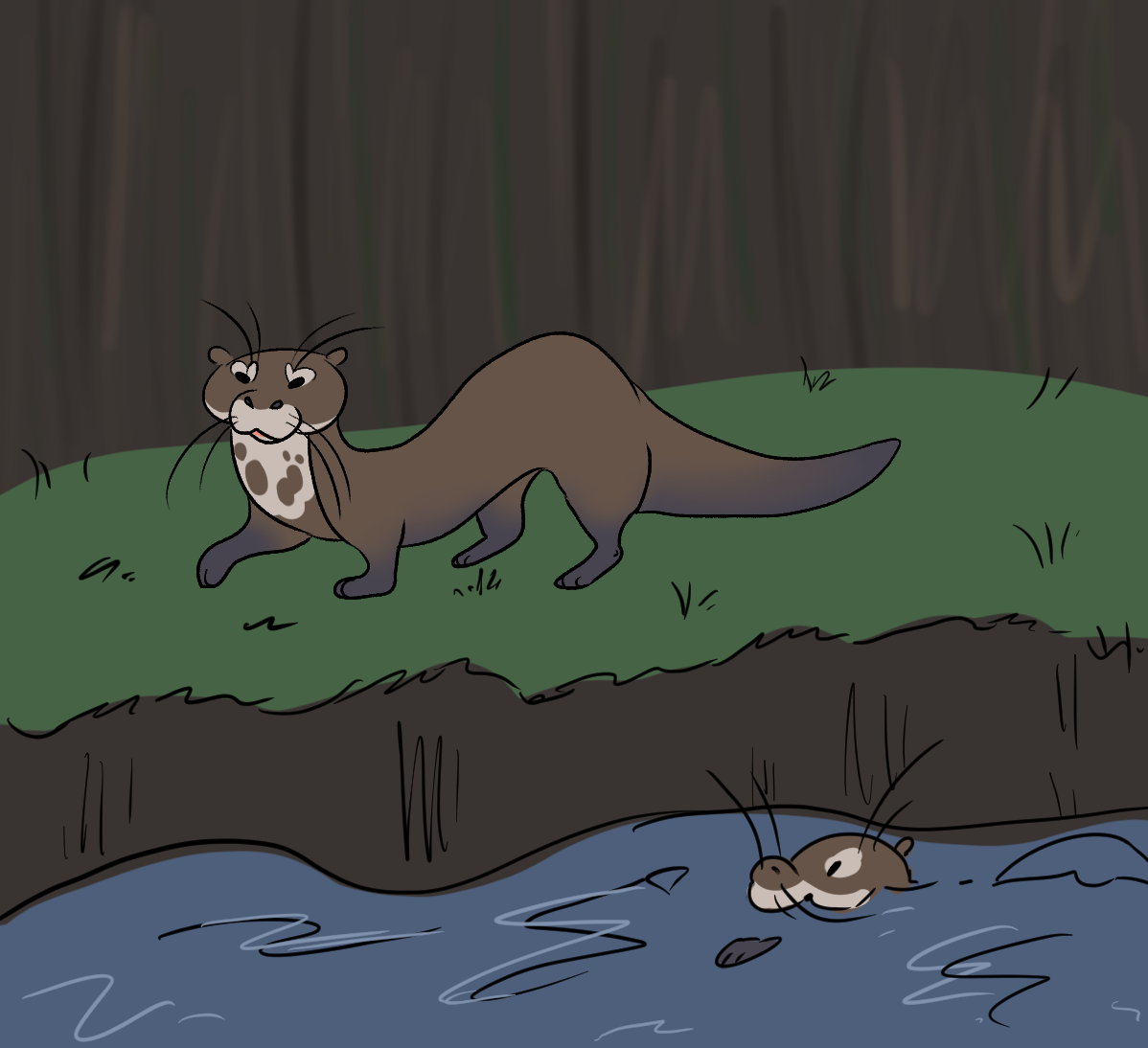Giant River Otters
The giant river otter is native to the waterways of the Amazon rain forest in South America. Their range extends through several countries in the upper portion of the continent, including Brazil, Columbia, and Ecuador. Its dense fur and webbed feet allow it to swim after fish in the canals and rivers of the rain forest. It’s shiny coat is partially to blame for its endangered status on the IUCN Red List (2008) due to heavy pelt poaching in the 1950s and 1960s. However, habitat loss is currently the largest threat facing these mammals. River pollution, overfishing, and mining all contribute to their endangered status. In 2021, their total wild population was estimated to be between one thousand to five thousand individuals. Due to their large territorial range, cooperative conservation efforts are required to ensure their survival.
Giant river otters live in social family groups of about four to ten members that center around one mating pair. They can grow up to 1.7 meters in length, with males typically growing larger than females. This makes them the longest of the Mustelidae family. Their short fur is primarily dark brown in color, but individuals can exhibit white patches on their chins and necks. These markings are specific to the individual and may aid in identification. Their webbed feet, strong rudder-like tails, and long whiskers enable them to quickly chase prey through the water. Giant river otters have also been observed primarily utilizing their keen eyesight to hunt, although their sense of smell is equally proficient.
The diets of giant river otters consist primarily of fish, but may also include crabs, turtles, and small snakes. They are a diurnal species, which means they are exclusively active during daylight hours. Giant river otters are also a very vocal species, with multiple chirps and whistles providing a means of communication. Given their territorial nature, their behavior can turn aggressive when threatened. While they do not have any true natural predators other than the jaguar or caiman, they do compete for food sources with other species.
Families of otters will den along the riverbanks in constructive tunnels they dig. Only the central pair in the family group will produce pups. Wild pups are typically born during August and September. At this time of year, drought has shrunk outlying rivers and streams, which allows for easier hunting of fish in more shallow waters. All members of the group have been observed caring for the young. While pups are present, the otters are particularly sensitive to human disruptions within their territory. Stressors cause by human interaction has been documented to increase the likelihood of neglect as well as decreased lactation in the mothers. After reaching sexual maturity, the offspring will often leave the group to establish their own family groups after two to three years. Their average lifespan in the wild is estimated to be between five and eight years of age.
Giant river otters play an important role within the ecosystem of the Amazon rainforest. As a top predator, they control local fish populations. Through continued conservation efforts, this endangered species may have a chance at cohabitation with humans.
Expedition Report!
sources:
https://peru.wcs.org/en-us/Wildlife/Giant-River-Otter.aspx
https://en.wikipedia.org/wiki/Giant_otter
https://www.palotoaamazontravel.com/10-endangered-species-of-amazon-rainforest-wildlife/
https://ptes.org/grants/worldwide-projects/giant-otters-peru/
https://www.eocaconservation.org/features-detail.cfm?featureid=37
Submitted By Riles
for Jungle Expedition: Report
Submitted: 3 years ago ・
Last Updated: 3 years ago
